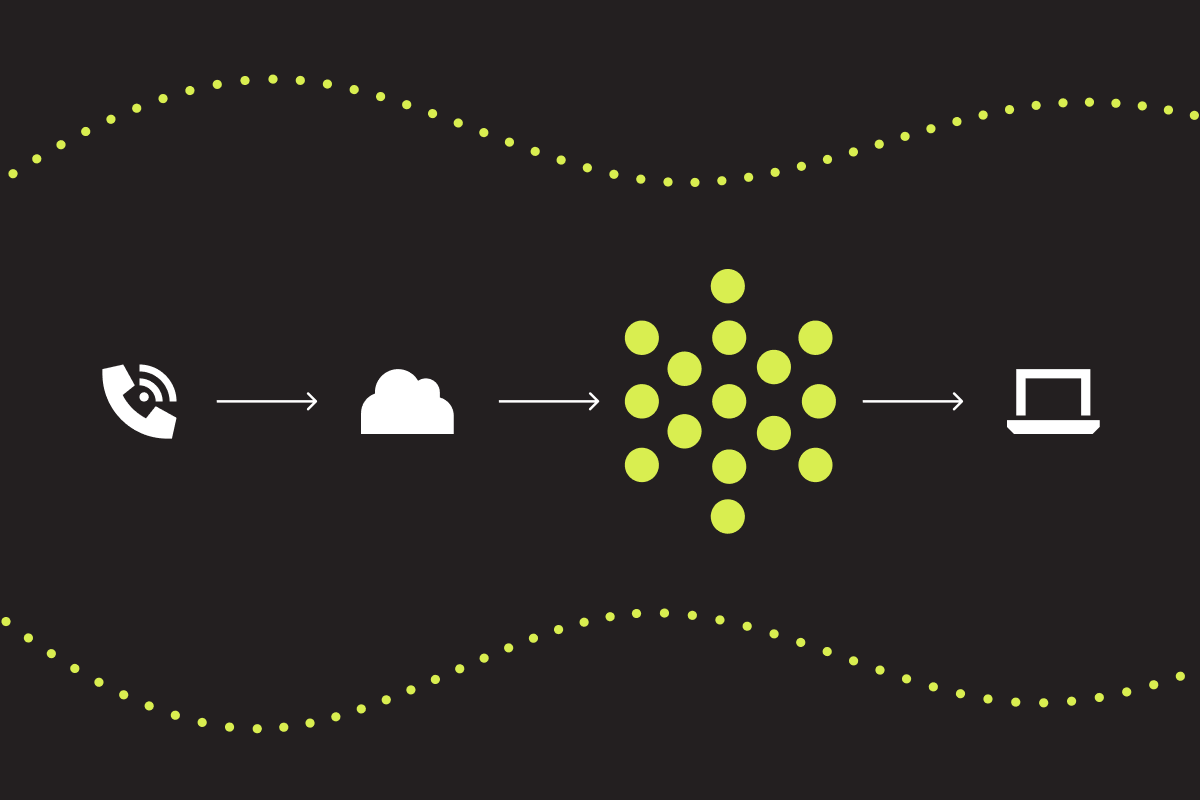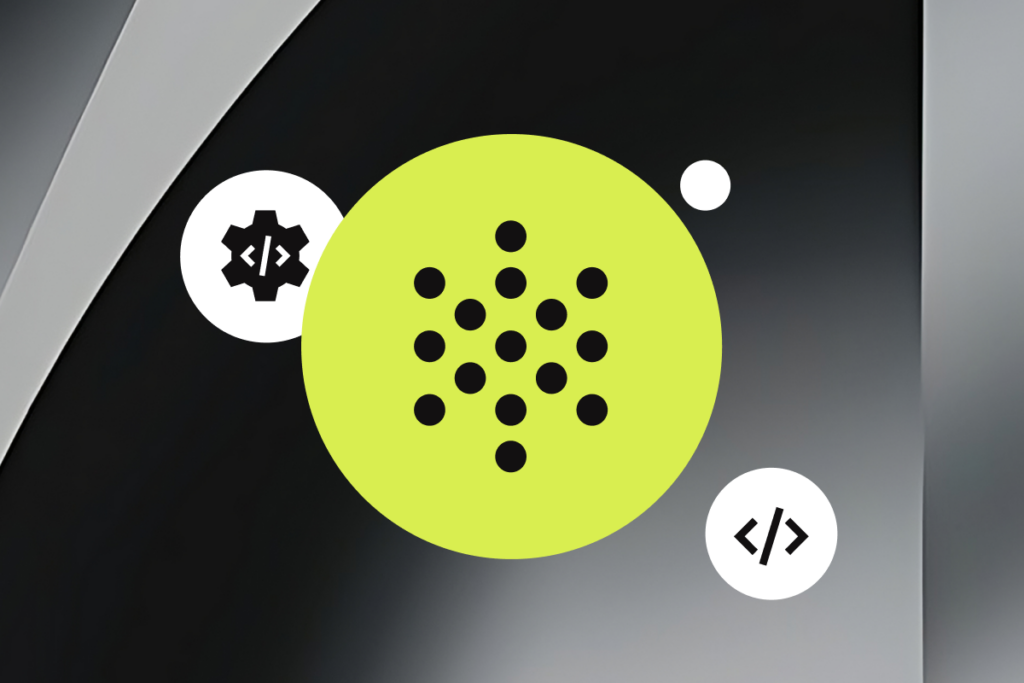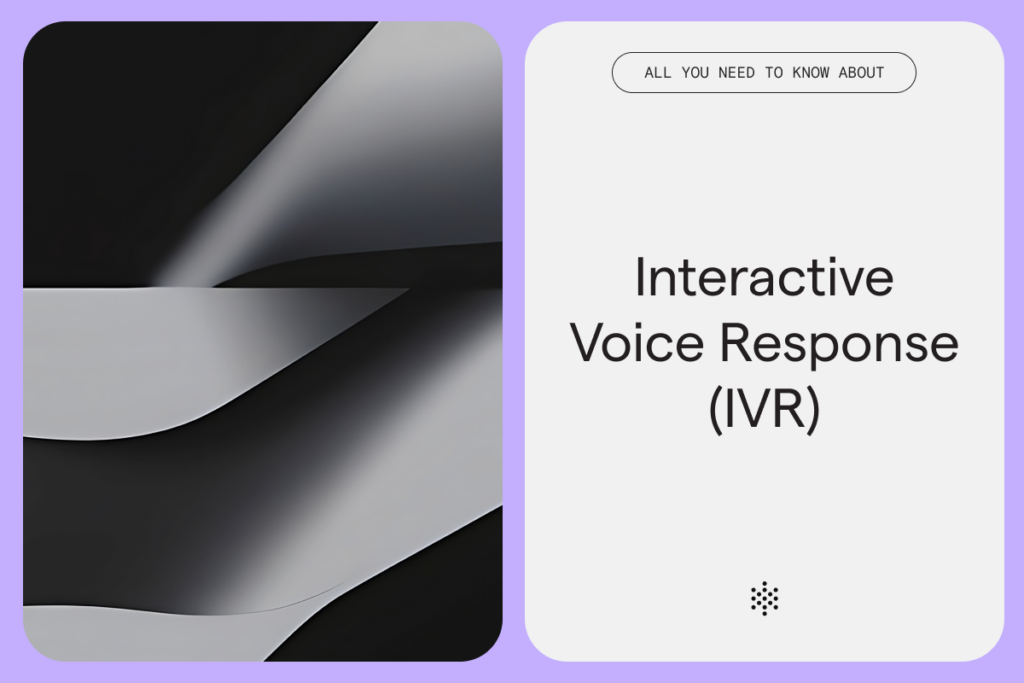Table of Contents
When considering the different options for voice automation, the ability for a voice assistant to hold a multi-turn conversation (and do it well) is essential for customer service. But what are multi-turn conversations, and why do they matter?
What is a conversational turn?
A conversational turn is a back and forth interaction during a conversation. Person A says something, person B responds. This also applies when interacting with AI voice assistants. The user speaks and the assistant responds, or vice-versa.
Many of us have grown accustomed to using voice automation in our everyday lives, with phrases like:
- Hey Siri, set a timer for 10 minutes.
- OK Google, set a reminder to call Charles at midday tomorrow.
- Alexa, play my music in the lounge room.
Conversational AI technology is great for making simple tasks quicker and easier via the most natural interface for us humans – voice!
But these kinds of household virtual assistants are not built for holding ongoing conversations with multiple turns to resolve more complex queries. Instead, a lot of the tasks they perform are simple enough that they can be completed with just one response, with no need for any further questions or exchanges. In other words, these tasks are completed within a single conversational turn.
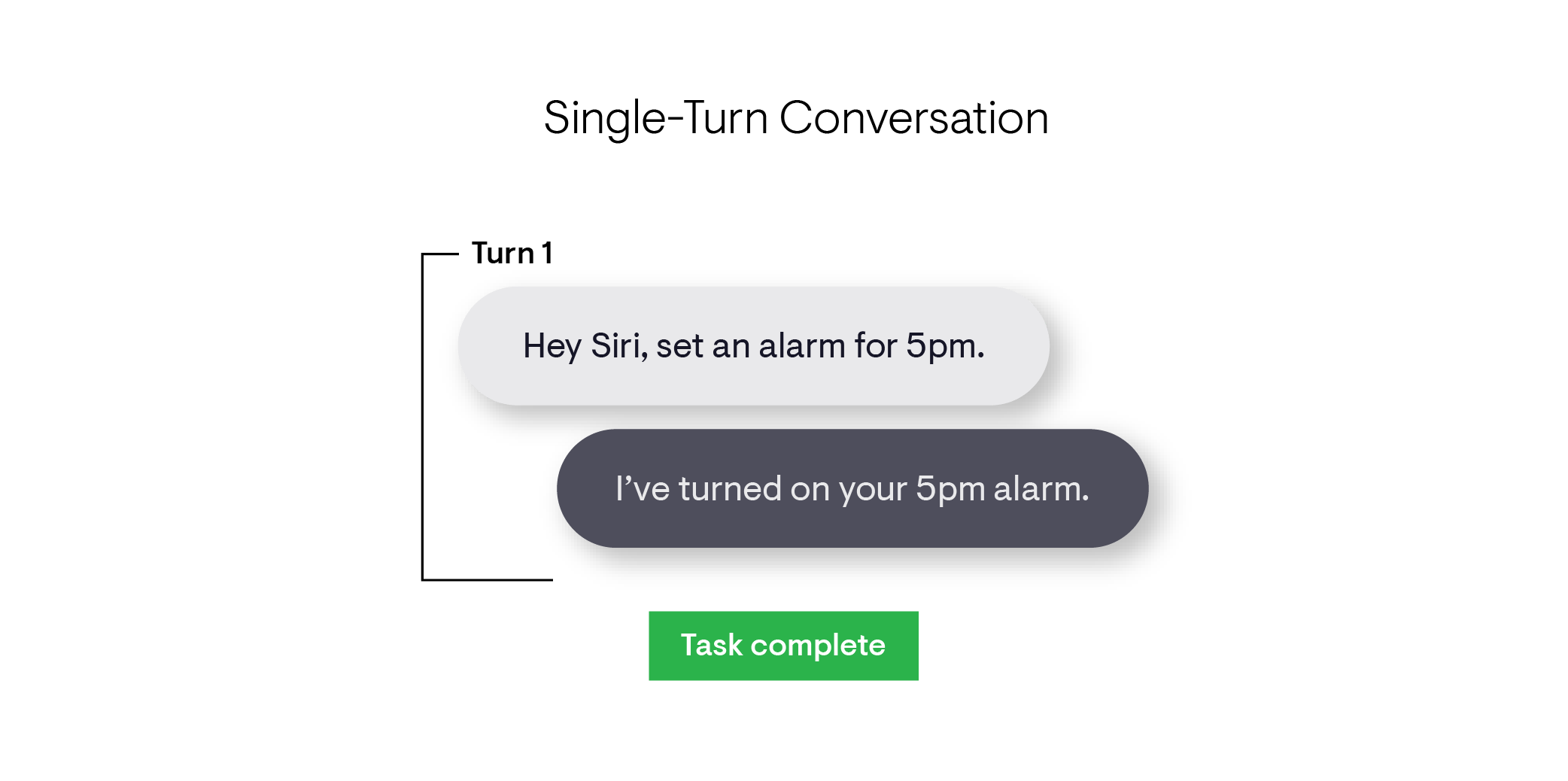
What are multi-turn conversational automations?
Multi-turn conversational automations refer to automated systems designed to handle dialogues that require multiple exchanges between a user and a system to achieve a goal or complete a task. These artificial intelligence systems use natural language processing (NLP) to understand and respond to user inputs over the course of several interactions, maintaining context retention throughout the conversation.
Why context matters in multi-turn conversations
If more than one turn occurs in an interaction, this becomes a multi-turn conversation. Technology like Siri or Google sometimes performs basic multi-turn conversations, as illustrated below.
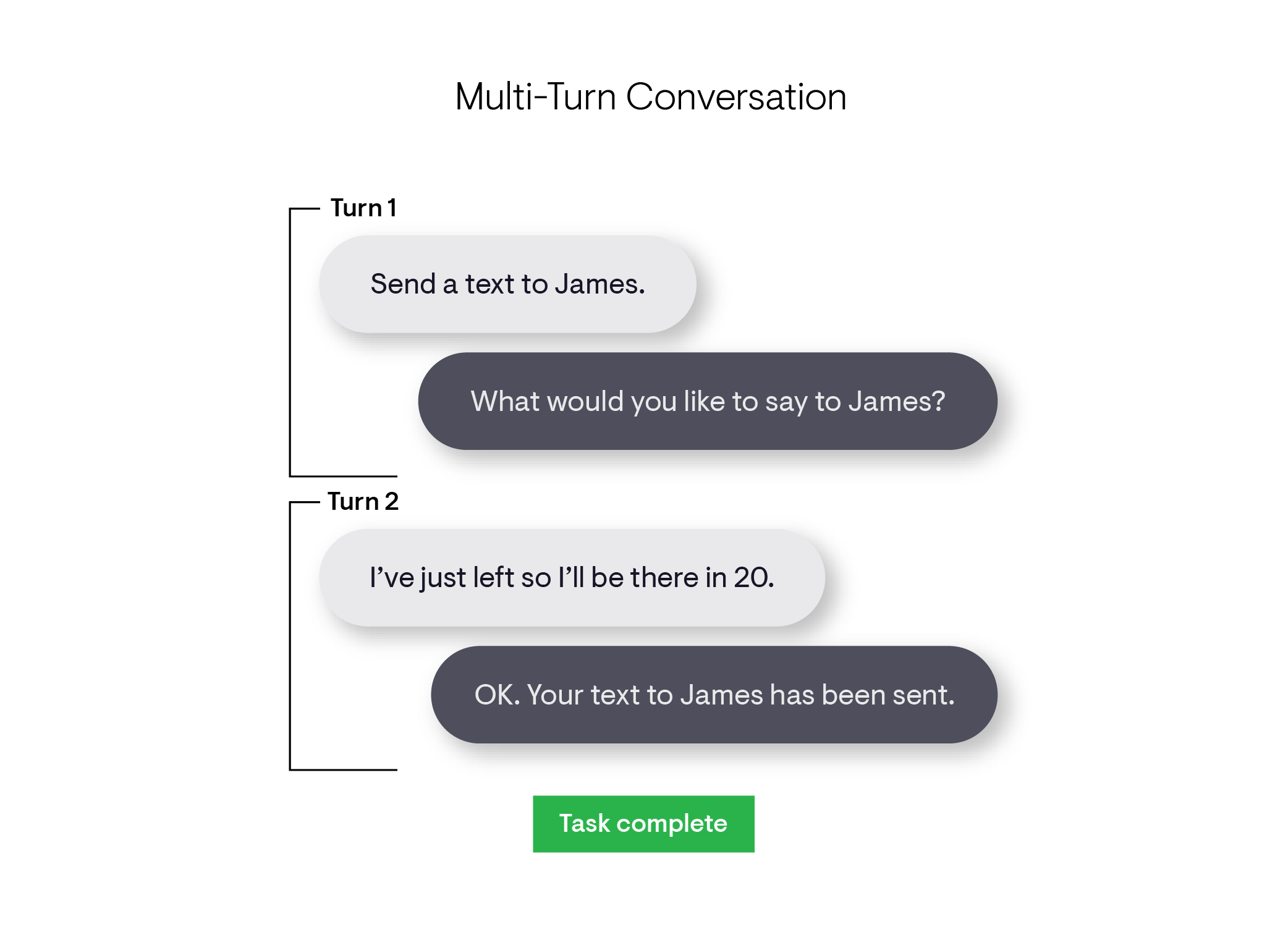
You may notice, though, that if you try to continue the conversation with this technology and ask another question like ‘Have you sent it?’, the bot won’t understand the request. It might try to send a new message, or ask you to phrase your question differently. This is because the bot has forgotten the context from the initial command (sending a text).
In order to hold longer and more complex conversations with multiple turns, the bot needs to remember the context throughout the conversation, as well as remember what information has already been gathered. While this is a natural and inherent part of human interactions, it’s quite complex to program into voice assistants.
The importance of multi-turn conversations for customer service
Your customers are complex and unpredictable. One person might resolve a FAQ in one or two conversational turns, and the next might need 8 turns to ask questions and change their mind before making a decision. To provide an unbeatable customer experience, your voice assistant needs to be able to handle these multi-turn conversations, carrying on each interaction to its resolution.
Great multi-turn conversational ability also allows your customers to speak naturally. Instead of re-stating the context every time they speak, they can carry on the conversation as they would with a human agent, while the voice assistant remembers what’s been discussed so far, as well as the details that have been collected.
Customers shouldn’t need to follow a rigid checklist, such as:
- What is your name?
- What is your phone number?
- What time would you like to book for?
- How many people are you booking for? Etc.
This is an unnatural and robotic way of taking details that forces the user to follow a script. Instead, the customer should be able to give information naturally (‘Hi, I’d like to book a table for 2 tonight’) and the voice assistant should be able to take down information as the customer talks, and only prompt for the remaining information needed to complete the transaction.
Multi-turn also allows customers to interrupt, ask a new question in the middle of a transaction, or change their mind. The bot should remember where the conversation was left off and be able to pull the user back into the relevant flow, like in the following conversational AI example.
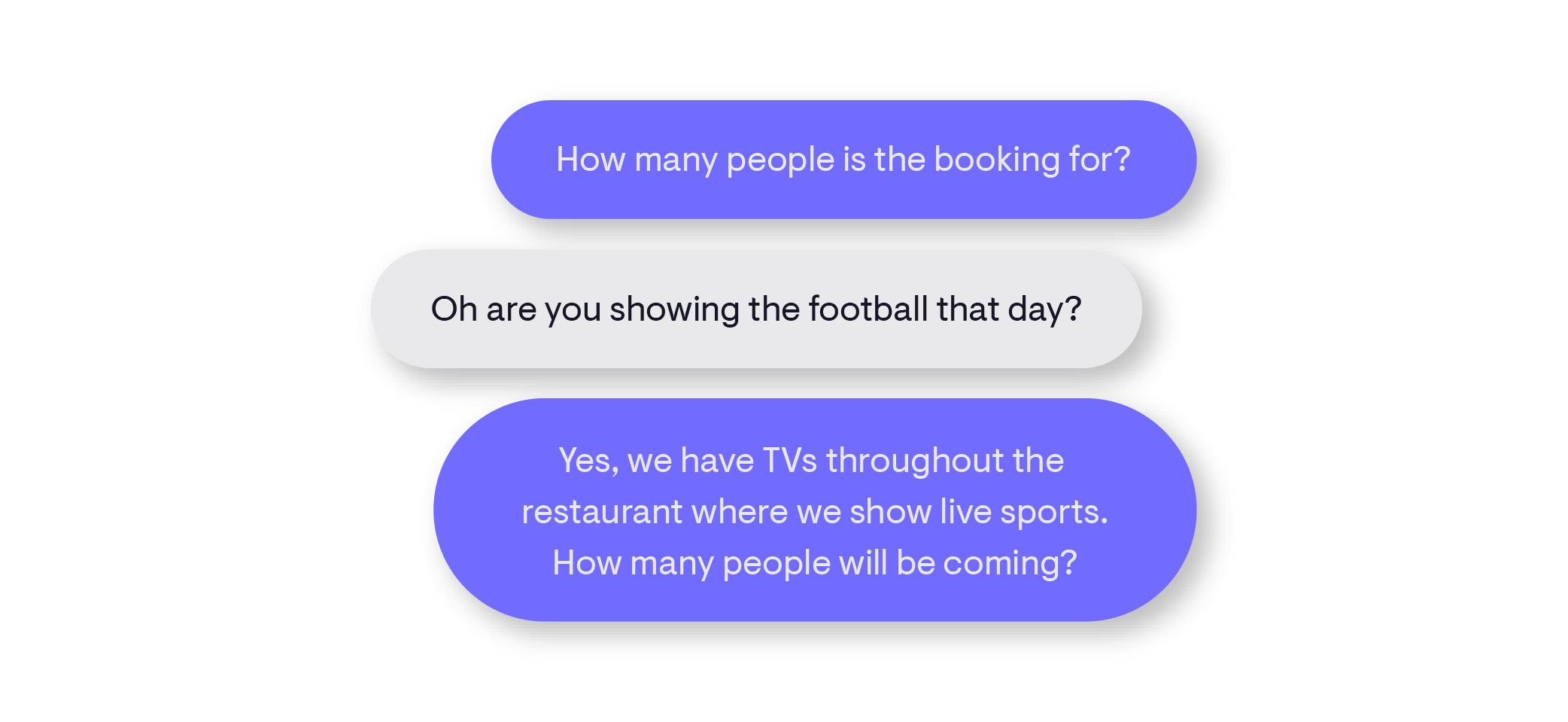
Transform your voice automations with PolyAI’s multi-turn conversations
The more turns that occur in a conversation, the more complex the conversation gets. Voice assistants with a high level of accuracy in each turn will have the most success in resolving complex customer interactions. If the level of accuracy is lower to begin with, it will have a much lower probability of success after multiple conversational turns due to compounding error. As the conversation goes on, the errors will worsen exponentially, creating an incredibly frustrating customer experience that is unlikely to be successful.
PolyAI voice assistants leverage cutting-edge dialogue management models to allow for multi-turn conversations that flow freely while following the business logic needed to complete transactions.
You can hear a PolyAI voice assistant helping Emily book a table reservation in this recording:
To find out more, request a demo today and see how PolyAI’s voice assistant could transform your customer experience.

